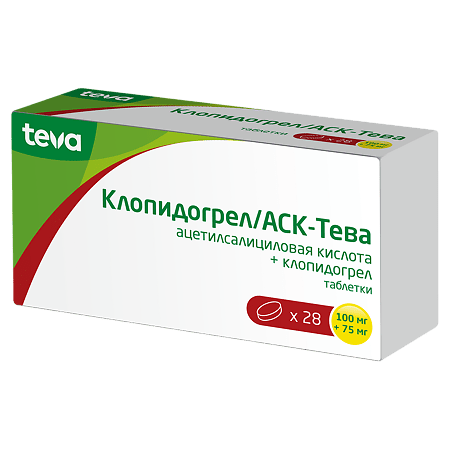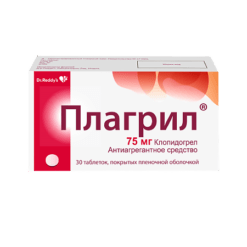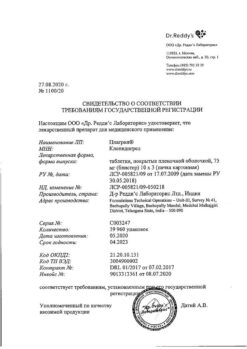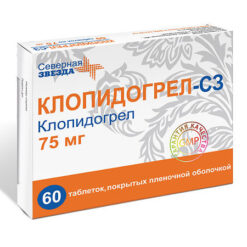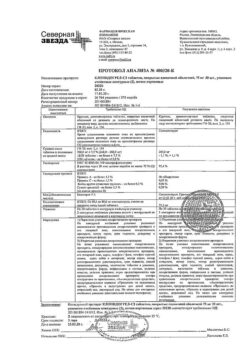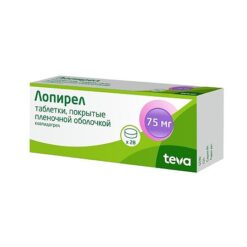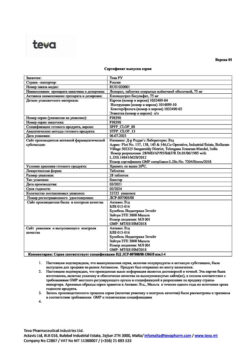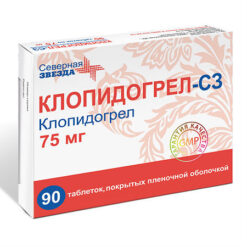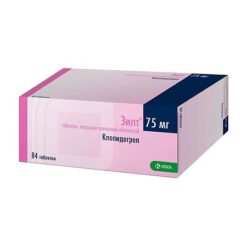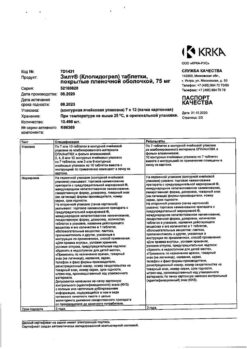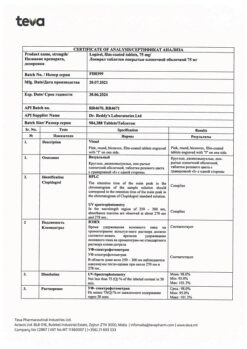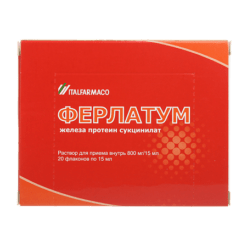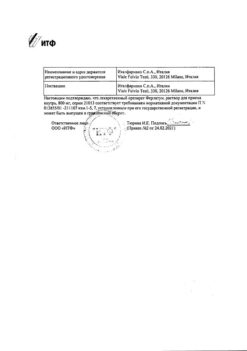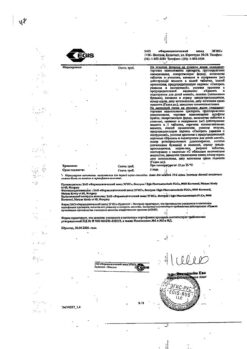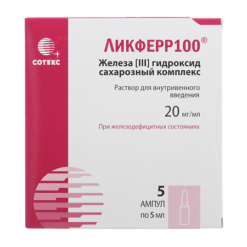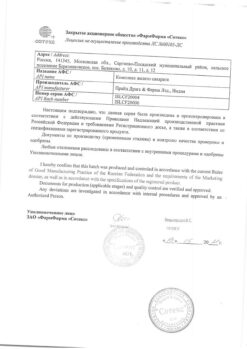No products in the cart.
Clopidogrel/ASK-Teva, tablets 100 mg+75 mg 28 pcs
€1.00
Out of stock
(E-mail when Stock is available)
Description
Pharmacotherapeutic group: anti-aggregant.
ATX code: B01AC30
Pharmacological properties.
Pharmacodynamics
p> Clopidogrel is a prodrug with one of its active metabolites being a platelet aggregation inhibitor. To form an active metabolite that inhibits platelet aggregation, clopidogrel must be metabolized by cytochrome P450 (CYP450) isoenzymes.
The active metabolite of clopidogrel selectively inhibits adenosine diphosphate (ADP) binding to the P2Y12 receptor of platelets and subsequent ADP-mediated activation of the GPIIb/IIIa complex, leading to suppression of platelet aggregation.
With irreversible binding, platelets remain immune to ADP stimulation for the remainder of their lives (approximately 7-10 days), and recovery of normal platelet function occurs at a rate consistent with the rate of platelet renewal.
The aggregation of platelets caused by agonists other than ADP is also inhibited by blocking enhanced platelet activation by the released ADP.
Since formation of the active metabolite occurs via cytochrome P450 system isoenzymes, some of which may be polymorphic or inhibited by other drugs, not all patients may have adequate inhibition of platelet aggregation.
When clopidogrel is taken daily in a dose of 75 mg, significant suppression of ADP-induced platelet aggregation is noted from the first day of administration, which gradually increases over 3-7 days and then reaches a constant level (when an equilibrium state is reached). In the equilibrium state, platelet aggregation is suppressed by an average of 40-60%. After stopping clopidogrel administration, platelet aggregation and bleeding time gradually return to the initial level, on average within 5 days.
Acetylsalicylic acid (ASA) has a different and complementary mechanism of antiaggregative action to clopidogrel. ASA suppresses platelet aggregation through irreversible inhibition of prostaglandin cyclooxygenase-1 and, consequently, reduction of formation of thromboxane A2, which is an inducer of platelet aggregation and vasoconstriction. This effect persists throughout the life of the platelets.
ASK does not alter the inhibitory effect of clopidogrel on ADP-induced platelet aggregation, whereas clopidogrel increases the effect of ASK on collagen-induced platelet aggregation.
The two active agents in monotherapy and when used concomitantly can prevent the development of atherothrombosis in any localization of atherosclerotic vascular lesions, particularly in cerebral, coronary or peripheral arterial lesions.
. The ACTIVE-A clinical trial showed that patients with atrial fibrillation who had at least one risk factor for vascular complications but were unable to take indirect anticoagulants, clopidogrel combined with ASA (compared with taking ASA alone) reduced the incidence of combined stroke, myocardial infarction, systemic thromboembolism outside central nervous system (CNS) vessels, or death from vascular causes, more by reducing the risk of stroke.
The benefit of taking clopidogrel in combination with ASA compared with taking ASA in combination with placebo was detected early and persisted throughout the study period (up to 5 years). The reduction in the risk of major vascular complications in the group of patients taking clopidogrel in combination with ASA was mainly due to a greater reduction in the incidence of strokes.
The risk of stroke of any severity decreased when clopidogrel was used in combination with ASA, and there was a tendency to a decrease in the incidence of myocardial infarction in the group of patients who took clopidogrel in combination with ASA, but there were no differences in the incidence of thromboembolism outside CNS vessels or death from vascular causes. In addition, the use of clopidogrel in combination with ASA reduced the total number of days of hospitalization for cardiovascular disease.
Pharmacokinetics
p> absorption
Klopidogrel
In a single and course oral dose of 75 mg per day, clopidogrel is rapidly absorbed in the gut.
The mean maximum plasma concentrations (Cmax) of unchanged clopidogrel (approximately 2.2-2.5 ng/ml after an oral single dose of 75 mg) are reached approximately 45 minutes after a single dose. According to the excretion of clopidogrel metabolites by the kidneys, its absorption is approximately 50%.
Acetylsalicylic acid
After absorption, ASK undergoes hydrolysis to form salicylic acid, Cmax of which in plasma are reached 1 hour after ASK ingestion. Due to rapid hydrolysis 1.5-3 hours after oral administration of Clopidogrel/ASK-Teva ASK is practically not detected in blood plasma.
Radistribution
p> Klopidogrel
In vitro in is
Acetylsalicylic acid
ASC binds weakly to plasma proteins and has a low volume of distribution (10L). Its metabolite, salicylic acid, binds well to plasma proteins, but its binding to plasma proteins depends on its concentration in blood plasma (non-linear relationship). At low concentrations (< 100 µg/ml) about 90% of salicylic acid binds to plasma albumin. Salicylic acid is well distributed in tissues and body fluids, including the CNS, breast milk and fetal tissues.
Metabolism
Klopidogrel
Clopidogrel is extensively metabolized in the liver. In vitro and in vivo clopidogrel is metabolized via two metabolic pathways: The first pathway, metabolism by enzymes (esterases), which leads to hydrolysis to form an inactive metabolite, a carboxylic acid derivative (accounts for 85% of the metabolites circulating in the systemic bloodstream); the second pathway, metabolism by several isoenzymes of the cytochrome P450 system.
In this case, clopidogrel is first metabolized to 2-oxo-clopidogrel, which is an intermediate metabolite. Subsequent metabolism of 2-oxo-clopidogrel leads to the formation of the active metabolite of clopidogrel – thiol derivative of clopidogrel.
The active metabolite is formed primarily by CYP2C19 with the participation of several other isoenzymes, including CYP1A2, CYP2B6 and CYP3A4. The active thiol metabolite of clopidogrel, which has been isolated in in vitro studies, binds rapidly and irreversibly to platelet receptors, inhibiting platelet aggregation.
After a loading dose of clopidogrel 300 mg, the Cmax of the active metabolite is 2 times greater than after a 4-day maintenance dose of clopidogrel 75 mg, and its Cmax is reached approximately 30-60 minutes after clopidogrel administration.
Acetylsalicylic acid
ASA when taken in combination with clopidogrel undergoes rapid plasma hydrolysis to salicylic acid with a half-life (T1/2) of 0.3-0.4 h for ASA doses of 75-100 mg. Salicylic acid mainly undergoes conjugation in the liver to form salicyluric acid, phenolic glucuronide and acyl glucuronide, as well as a large number of minor metabolites.
Extract
Klopidogrel
For 120 h after human oral administration 14C-labeled clopidogrel, about 50% of the radioactivity is excreted by the kidneys and about 46% of the radioactivity is excreted through the intestine. After a single oral dose of 75 mg, the T1/2 of clopidogrel is approximately 6 hours. After a single and course dose of clopidogrel, the T1/2 of the main circulating inactive metabolite in blood is 8 hours.
Acetylsalicylic acid
. Salicylic acid has a T1/2 from blood plasma of approximately 2 h when administered with Clopidogrel/ASC-Teva. The metabolism of salicylate is saturable and total clearance is reduced at higher serum concentrations due to the limited ability of the liver to form salicylic acid and phenolic glucuronide.
The plasma T1/2 may increase up to 20 h after toxic doses of ASA (10-20 g). At high doses of ASA, elimination of salicylic acid follows a zero-order kinetics (that is, the rate of elimination depends on plasma concentration) with a T1/2 of 6 h or more.
The renal excretion of unchanged active substance depends on the urine pH. When the pH exceeds 6.5, the renal clearance of free salicylate increases from < 5% to > 80%. After therapeutic doses, approximately 10% of the dose taken is detected in the urine as salicylic acid, 75% of the dose taken as salicyluric acid, 10% of the dose taken as phenolic glucuronides, and 5% of the dose taken as acyl glucuronides.
Farmakogenetics
. Both the active metabolite and the intermediate metabolite 2-oxo-clopidogrel are formed via the CYP2C19 isoenzyme. Pharmacokinetics and antiaggregant effect of the active metabolite clopidogrel in platelet aggregation studies ex vivo (in vitroro study of platelet aggregation in blood taken from a patient who took clopidogrel orally, that is, after clopidogrel is metabolized in the body) vary depending on the genotype of the CYP2C19 isoenzyme.
The CYP2C19*1 isoenzyme gene allele corresponds to fully functional metabolism, whereas the CYP2C19*2 and CYP2C19*3 isoenzyme gene alleles are nonfunctional. The CYP2C19*2 and CYP2C19*3 isoenzyme gene alleles are responsible for reduced metabolism in the majority of Caucasoid (85%) and Mongoloid races (99%).
The other alleles that are associated with absence or reduced metabolism are less common and include, but are not limited to, the CYP2C19*4, *5, *6, *7, and *8 isoenzyme gene alleles. A patient with low CYP2C19 isoenzyme activity will have the two loss-of-function gene alleles listed above.
The published frequencies of occurrence in general populations of people with a phenotype with low CYP2C19 isoenzyme activity are: in Caucasoid patients 2%, in Negroid patients 4%, and in Mongoloid patients 14%. There are appropriate tests to determine the CYP2C19 isoenzyme genotype of a patient.
. According to data from a cross-sectional study (40 healthy volunteers) and from a meta-analysis of six studies (335 volunteers taking clopidogrel) that included healthy volunteers with very high, high, intermediate, and low CYP2C19 isoenzyme activity, No significant differences were found in the exposure of the active metabolite and in the mean values of platelet aggregation inhibition (PIA) (induced by ADP) in healthy volunteers with very high, high, and intermediate CYP2C19 isoenzyme activity.
In healthy volunteers with low CYP2C19 isoenzyme activity, compared with healthy volunteers with high CYP2C19 isoenzyme activity, exposure to the active metabolite was decreased.
When volunteers with low CYP2C19 isoenzyme activity took clopidogrel on a regimen of: 600 mg loading dose/150 mg maintenance dose (600 mg/150 mg), exposure to the active metabolite was higher than when clopidogrel was taken on the regimen: 300 mg/75 mg.
In addition, IAT was similar to that in groups of patients with higher metabolism rates by the CYP2C19 isoenzyme who were taking clopidogrel on the regimen: 300 mg/75 mg. However, the dosing regimen of clopidogrel for patients in this group (patients with low CYP2C19 isoenzyme activity) has not yet been established in studies with regard to clinical outcomes.
This is because the clinical studies conducted to date have not had sufficient sample size to detect differences in clinical outcome in patients with low CYP2C19 isoenzyme activity.
Otseparate patient groups
The pharmacokinetics of the active metabolite clopidogrel in selected patient groups have not been studied.
Patients over 75 years
There were no differences in platelet aggregation and bleeding time in elderly volunteers (over 75 years) when compared to younger volunteers. No dose adjustment is required for the elderly.
Dchildren younger than 18 years
Data not available.
Pacandpatients with impaired renal function
. After repeated doses of clopidogrel at 75 mg/day, patients with severe renal impairment (creatinine clearance of 5 to 15 mL/min) had lower (25%) inhibition of ADP-induced platelet aggregation compared with healthy volunteers, but prolongation of bleeding time was similar to that in healthy volunteers taking clopidogrel at 75 mg/day.
Pacandpatients with impaired liver function
. After 10 days of daily clopidogrel administration at a daily dose of 75 mg in patients with severe hepatic impairment (greater than 9 points on the Child-Pugh scale), inhibition of ADP-induced platelet aggregation was similar to that in healthy volunteers. The mean bleeding time was also comparable in both groups.
Etpecificity
The prevalence of CYP2C19 isoenzyme gene alleles responsible for intermediate and reduced metabolism varies among different ethnic groups. There are limited literature data on their prevalence among members of the Mongoloid race, which does not allow an assessment of the clinical significance of the influence of CYP2C19 isoenzyme genotypes on clinical outcomes.
Based on the pharmacokinetics and metabolic features of both active ingredients of Clopidogrel/ASC-Teva, no clinically significant pharmacokinetic interactions are expected between them.
Indications
Indications
The drug Clopidogrel/ASA-Teva is indicated for use in adult patients who are already receiving both clopidogrel and acetylsalicylic acid.
Secondary prevention of atherothrombotic complications (complications arising as a result of atherothrombosis*, such as ischemic stroke (acute circulatory disorder in the brain or spinal cord), myocardial infarction (acute disease with damage to the heart muscle as a result of a sudden interruption of blood supply).
*atherothrombosis is a disease characterized by the presence of a rupture, a crack on the surface of an atherosclerotic plaque (focal thickening of the inner lining of the artery), which is “covered” by a blood clot of various sizes.
In adult patients with acute coronary syndrome (conditions caused by an acute progressive decrease in blood supply to the coronary arteries of the heart muscle):
without ST segment elevation (unstable angina or non-Q wave myocardial infarction), including patients who underwent stenting for percutaneous coronary intervention;
with ST segment elevation (acute myocardial infarction) with drug treatment and the possibility of thrombolysis (elimination of blood clots using conservative treatment methods).
Prevention of atherothrombotic and thromboembolic complications (complications caused by acute blockage (embolism) of a blood vessel by a thrombus that has broken away from the site of its formation) in adult patients with atrial fibrillation (atrial fibrillation) – excessively frequent chaotic contractions or twitching of the muscular elements of the atria.
In patients with atrial fibrillation at increased risk of vascular complications, therapy with drugs that inhibit the blood clotting process (indirect anticoagulants) is associated with greater clinical benefit compared with the use of acetylsalicylic acid alone or the combination of clopidogrel with acetylsalicylic acid in reducing the risk of stroke (acute circulatory disorder in the brain or spinal cord).
Patients with atrial fibrillation (atrial fibrillation) who have at least one risk factor for the development of vascular complications and who cannot take drugs that inhibit the process of blood clotting (for example, if there is a special risk of bleeding, the patient is unable, in the opinion of the doctor, to adequately control the INR (international normalized ratio) or in case of intolerance or contraindications to the use of drugs that inhibit the blood clotting process), to prevent atherothrombotic and thromboembolic complications, including stroke, clopidogrel is indicated in combination with acetylsalicylic acid.
Studies have shown that therapy with clopidogrel in combination with acetylsalicylic acid reduced the incidence of events that included stroke, myocardial infarction, systemic thromboembolism outside the central nervous system (blockage (embolism) of a blood vessel by a blood clot that breaks away from its site of origin) or cardiovascular death (death associated with cardiac causes), mainly due to a decrease in the incidence of development of stroke.
If there is no improvement or you feel worse, you should consult a doctor.
Special instructions
Special instructions
Driving vehicles and working with machinery
If you experience adverse side reactions from the nervous system and psyche (see section 4.), there may be a decrease in concentration and speed of psychomotor reactions, which may interfere with driving and engaging in other potentially hazardous activities. In such cases, the question of the possibility of engaging in potentially hazardous activities should be decided by the attending physician.
The drug Clopidogrel/ASK-Teva contains lactose
If your doctor has told you that you have an intolerance to certain sugars, talk to your doctor before taking this drug.
The drug Clopidogrel/ASK-Teva contains hydrogenated castor oil
Taking this medicine may cause stomach upset and diarrhea.
Active ingredient
Active ingredient
Acetylsalicylic acid, Clopidogrel
Composition
Composition
The active ingredients are: acetylsalicylic acid and clopidogrel.
Each tablet contains 100.00 milligrams of acetylsalicylic acid and 97.87 milligrams of clopidogrel hydrosulfate, 75.00 milligrams in terms of clopidogrel. Other ingredients (excipients) of the drug are: anhydrous lactose, microcrystalline cellulose, crospovidone, glyceryl dibehenate, hydrogenated castor oil, dye pigment mixture purple PB-200001 (lactose monohydrate, carmine, indigo carmine aluminum varnish).
Pregnancy
Pregnancy
If you are pregnant or breastfeeding, think you may be pregnant, or are planning a pregnancy, consult your doctor before starting to use the drug.
Do not use Clopidogrel/ASA-Teva if you are pregnant.
Do not use Clopidogrel/ASK-Teva if you are breastfeeding a baby.
Acetylsalicylic acid has been found to have a negative effect on embryo development.
Contraindications
Contraindications
Allergy to the active substances or other components of the drug (listed in section 6 of the leaflet);
severe liver failure (more than 9 points on the Child-Pugh scale);
severe renal failure (creatinine clearance less than 30 ml/min) (due to the content of acetylsalicylic acid in the drug);
acute bleeding, such as bleeding from a peptic ulcer or intracranial hemorrhage;
bronchial asthma induced by taking salicylates and other non-steroidal anti-inflammatory drugs; syndrome of bronchial asthma, rhinitis and recurrent polyposis of the nose and paranasal sinuses, hypersensitivity to NSAIDs (due to the content of acetylsalicylic acid in the drug);
mastocytosis (a chronic disease characterized by an increase in mast cells in the skin, lymph nodes, bone marrow, spleen and some other organs), in which the use of acetylsalicylic acid can cause severe hypersensitivity reactions (increased sensitivity of the body to any substance), including the development of shock with hyperemia of the skin, decreased blood pressure, tachycardia (increased heart rate) and vomiting (due to the content of acetylsalicylic acid in the drug);
pregnancy and breastfeeding (see section “Pregnancy, breastfeeding and fertility”).
If you think any of the above applies to you, tell your doctor.
Special instructions and precautions
Before using Clopidogrel/ASA-Teva, consult your doctor, pharmacist, or nurse.
Be sure to tell your doctor if any of the following applies to you:
if you have risks of bleeding, such as:
a disease in which there is a risk of internal bleeding (for example, a stomach ulcer);
a blood disorder that puts you at risk of internal bleeding (bleeding in any tissue, organ or joint in your body);
recent serious injury;
recent surgery (including dental surgery);
planned surgery (including dental surgery) in the next seven days;
if you have recently had a blood clot in a brain artery (ischemic stroke);
if you have kidney or liver disease;
if you have a medical history of asthma or allergic reactions, including an allergy to any medicine used to treat your condition;
if you have gout (a chronic disease with the deposition of uric acid salts in tissues and with the development of inflammatory changes in them), hyperuricemia (increased levels of uric acid in the blood);
if you have atrial fibrillation (atrial fibrillation) and are at increased risk of developing cardiovascular complications;
if you drink alcohol (due to increased risk of bleeding or gastrointestinal injury);
if you have a condition known as a genetically determined decrease in the activity of the isoenzyme CYP2C19;
if you have a condition known as glucose-6-phosphate dehydrogenase deficiency due to the risk of a certain form of anemia (reduced concentration of hemoglobin in the blood and also red blood cells).
Children and teenagers
Do not give the drug to children from 0 to 18 years of age, since there are no data on the safety and effectiveness of the drug Clopidogrel/ASA-Teva in children and adolescents.
Side Effects
Side Effects
Like all medicines, Clopidogrel/ASA-Teva can cause side effects, although not everyone gets them.
The most serious adverse reactions reported with the use of acetylsalicylic acid and clopidogrel:
Rarely:
Interaction
Interaction
Tell your doctor if you are taking, have recently taken, or may start taking any other medications.
This may be especially important if you are taking any of the following medications:
medications that may increase the risk of bleeding, such as:
oral anticoagulants (medicines used to reduce blood clotting);
naproxen, a cyclooxygenase-2 inhibitor, ibuprofen, or other nonsteroidal anti-inflammatory drug commonly used to treat a painful and/or inflammatory condition of muscles or joints;
heparin or any other injectable medicine used to reduce blood clotting;
ticlopidine (antithrombotic agent);
selective serotonin reuptake inhibitors (including, but not limited to, fluoxetine or fluvoxamine) (medicines commonly used to treat depression);
rifampicin (antibiotic, anti-tuberculosis drug);
omeprazole or esomeprazole (medicines to treat stomach and duodenal ulcers and reduce the secretion of hydrochloric acid in the stomach);
methotrexate (a medicine used to treat severe joint conditions (rheumatoid arthritis) or skin conditions (psoriasis));
acetazolamide (a medicine used to treat glaucoma (high eye pressure) or epilepsy or to increase urine flow);
probenecid, benzbromarone, or sulfinpyrazone (medicines used to treat gout);
fluconazole or voriconazole (medicines to treat fungal infections);
tenofovir, a medicine to treat HIV (human immunodeficiency virus) infections;
valproic acid, carbamazepine, or oxcarbazepine (medicines used to treat some forms of epilepsy);
chickenpox vaccine (medicine to prevent chickenpox or shingles);
moclobemide (an anti-depression medicine);
repaglinide (diabetes medicine);
paclitaxel (cancer medicine);
nicorandil (a drug to prevent angina pectoris);
metamizole (antipyretic and anti-inflammatory agent);
ciprofloxacin (antimicrobial agent);
cimetidine (preventive agent for exacerbation of peptic ulcer);
chloramphenicol (antibacterial agent);
levothyroxine (a medicine that replenishes the deficiency of thyroid hormones);
beta blockers (medicines to treat cardiac arrhythmias, hypertension, and to prevent heart attack);
diuretics (diuretics);
thrombolytics (help destroy blood clots and restore blood flow through clogged vessels);
glycoprotein IIb/IIIa inhibitors (prevent the formation of blood clots);
oral hypoglycemic agents (drugs that lower blood sugar (used to treat diabetes));
angiotensin-converting enzyme inhibitors (some medications used to treat high blood pressure);
opioids (medicines used for severe pain).
Clopidogrel/ASK-Teva with food, drinks and alcohol
Overdose
Overdose
Symptoms and treatment of clopidogrel overdose
An overdose of clopidogrel can lead to an increase in bleeding time with subsequent complications in the form of bleeding. If bleeding occurs, appropriate treatment is required. An antidote for clopidogrel has not been established. If rapid correction of prolonged bleeding time is necessary, platelet transfusion is recommended.
Symptoms and treatment of ASA overdose
Moderate overdose: dizziness, ringing in the ears, headaches, confusion and gastrointestinal (GIT) symptoms (nausea, vomiting and stomach pain).
When symptoms of severe intoxication are detected, severe disturbances in the acid-base state occur. Initially occurring hyperventilation leads to the development of respiratory alkalosis. Then respiratory acidosis develops as a consequence of the inhibitory effect of respiratory alkalosis on the respiratory center. Also, due to the presence of salicylates in the blood, metabolic acidosis develops.
In addition, the following symptoms appear: hyperthermia and profuse sweating, leading to dehydration, restlessness, convulsions, hallucinations and the development of hypoglycemia. Suppression of the nervous system can lead to the development of coma, collapse and respiratory arrest.
The lethal dose of ASA is 25-30 g. A plasma concentration of salicylate over 300 mg/l (1.67 mmol/l) confirms the presence of intoxication.
Overdose of salicylates, especially in young children, can lead to severe hypoglycemia and potentially fatal poisoning.
In case of acute and chronic overdose of ASA, non-cardiogenic pulmonary edema may develop (see section “Side effects”).
If symptoms of severe overdose are detected, hospitalization is required. In case of moderate intoxication, you can try to artificially induce vomiting; if unsuccessful, gastric lavage is indicated. After this, activated charcoal (an adsorbent) and a saline laxative should be taken orally (if the patient can swallow) or, otherwise, administered into the stomach through a tube.
In order to force the alkalinization of urine to accelerate the excretion of salicylates, intravenous drip administration of 250 mmol of sodium bicarbonate is indicated for 3 hours under the control of urine pH and acid-base status. The preferred treatment for severe overdose is hemodialysis or peritoneal dialysis. If necessary, symptomatic treatment of other manifestations of intoxication is used.
Storage conditions
Storage conditions
Keep the drug out of the reach of children and so that the child cannot see it.
Do not use the drug after the expiration date indicated on the blister or on the carton after the words “Best before:”. The expiration date is the last day of the given month.
Store at a temperature not exceeding 30 °C, in the original packaging.
Do not throw the drug into the sewer. Ask your pharmacist how to dispose of (destroy) a drug that is no longer needed. These measures will protect the environment.
Shelf life
Shelf life
3 years.
Do not use after expiration date
Manufacturer
Manufacturer
Actavis Ltd, Malta
Additional information
| Shelf life | 3 years. Do not use after the expiration date |
|---|---|
| Conditions of storage | Keep the drug out of reach of children so that they cannot see it. Do not use the drug after the expiration date stated on the blister or on the carton pack after the words "Fit until:". The expiration date is the last day of the month. Store at the temperature not more than 30 ° C, in the original package. Do not dispose of the drug in the sewer. Ask your pharmacist how to dispose of (destroy) the product that you will no longer need. These measures will help protect the environment. |
| Manufacturer | Actavis Ltd, Malta |
| Medication form | pills |
| Brand | Actavis Ltd |
Other forms…
Related products
Buy Clopidogrel/ASK-Teva, tablets 100 mg+75 mg 28 pcs with delivery to USA, UK, Europe and over 120 other countries.

